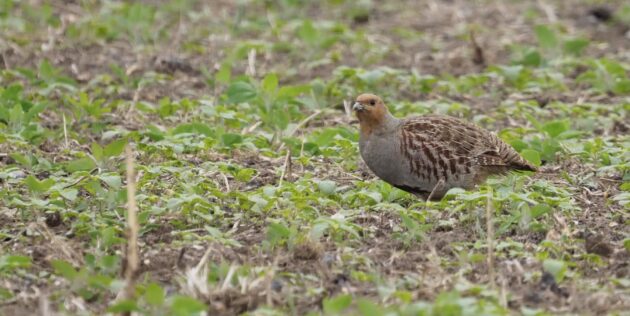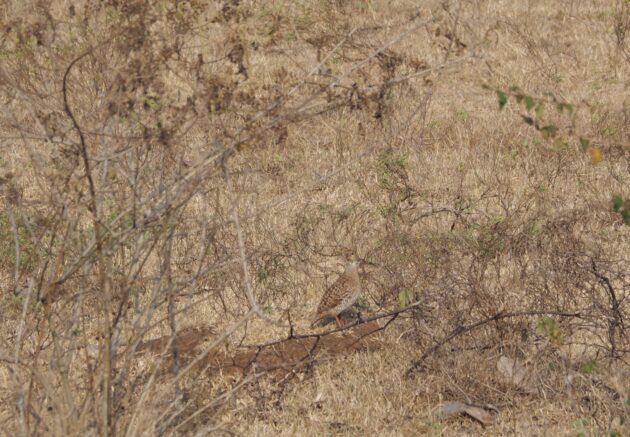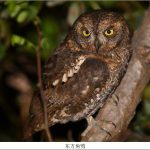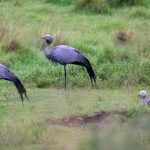
David Tomlinson
If you are American then you will no doubt know Perdix perdix as the Gray Partridge, an introduced game bird now widespread on the prairies of Canada and the northern states of the USA. Here in England it’s the Grey Partridge (subtle difference), but it’s often called the English Partridge, to differentiate it from our other, non-native, partridge, the Redleg, known to most shooting men as the French Partridge. Conversely, many American hunters refer to the gray/grey bird as the Hun, a shortened version of Hungarian, for Hungary was the source of many of the birds introduced to the Americas. These are hardy birds – they have to be to survive a Canadian winter. The photograph below was taken by a camera trap in Suffolk, England, in early March during a spell of freezing weather. The birds with the cock Partridge are Yellowhammers, plus a cock Pheasant.

I don’t know how many Gray Partridges there are in America, but here in Britain (and Europe, too) we wouldn’t mind if some were sent back to their home countries, as this delightful little game bird has declined catastrophically throughout much of its range during the last 50 years. You’d be lucky today to find even a pair in Hungary, while according to the European Breeding Atlas 2, it “has almost completely disappeared from S, central and W Italy, Switzerland, Norway and W Austria”. EBA2 goes on to say that the “Grey Partridge has undergone one of the steepest declines of all European farmland birds”.
There are just a few areas left where it still thrives. It is, or was, particularly common along the north shore of the Black Sea, with Crimea a stronghold. How the war is affecting it nobody seems to know. Northern France is another area with a strong population. Here the birds thrived during the First Word War, despite the trench warfare that took place around them, giving hope that the Crimean partridges might survive Putin’s war.

In England it was once one of our most familiar and widespread farmland birds. An idea of its former abundance can be gauged from the record bag of 2,119 ( all wild birds) shot in Lincolnshire on 3 October 1952. Today the Grey Partridge remains on the quarry list, but relatively few are shot. Ironically, the strongest populations can be found on shooting estates where landowners (and their gamekeepers) put great effort into looking after them. There is no better place to look for these delightful birds than the Earl of Leicester’s Holkham estate in North Norfolk, and the adjoining Sandringham estate that belongs to King Charles III.
Though (sadly) I don’t own a great estate, my home in the Suffolk Brecks is also in a good area for Greys. I see them regularly throughout the year, usually when I’m out walking my spaniel. This year I saw my local pair many times in May, though in June it was only the cock bird that I encountered. He generally flew just a short distance before dropping back into cover. I guessed that his mate was close by, incubating her eggs. A little worrying was a lack of sightings in August and September, but in late October a covey of 10 birds appeared in the field behind my garden, confirmation that they had bred successfully.

Grey Partridges are birds of the open fields, but occasionally they will explore different habitats, for on a few occasions they have ventured into my large but hedged garden. The first time I saw them here was exactly three years ago, when a covey of six spent some time prospecting my lawn. Last year a pair appeared a few times in late January: my picture (below) was taken from my study, through a double-glazed window. At the time I was having problems with a Mole, but I was prepared to forgive him his hills as they were clearly popular with the Partridges.


At close range (such as through the kitchen window) you can really admire the exquisitely subtle plumage of these delightful birds, with their wonderfully vermiculated feathers. The orange-brown head, a feature of both sexes, is charming, while the cock can be identified by the strong horseshoe marking on his breast.

Hen Grey Partridges have a serious claim to fame, for they lay the biggest clutches of any of the world’s 10,000 birds. In England clutches of 15 or 16 eggs are usual, but clutches of as many as 28 eggs, all laid by a single hen, have been recorded. Such big clutches are essential for survival, as there’s hardly a predator around that won’t eat an egg or chick given half a chance. Here in the Brecks survival rates tend to be good, as Red Foxes, arguably the most serious predator of these birds, are scarce. The local shooting estates keep the number of Foxes under control, which is good news if you are a Partridge.

On a recent trip to India I was delighted to see a pair of Grey Francolins, These birds are similar in shape, size and colouring to the Grey Partridge, and until recently they were generally known as just that. The two species are only distantly related, for Grey Francolins are true francolins, hence the name Francolinus pondicerianus. They are widespread throughout much of lowland India. The Grey Partridge has just two other species in its genus, the rather similar Daurian Partridge which occurs in northern China and Russia, and the Tibetan Partridge. No prizes for guessing where the latter is found.











The photo taken with the camera trap is fantastic – looks like it has been painted by Mr. Bruegel … and the photo of the juvenile is also great …
In the south of Germany there are hardly any Greys left. None whatsoever in my area, and I might get the opportunity to “twitch” one every few years in an area I occasionally visit around 100 km away. Sad story. I used to see them regularly during the 80s and early 90s. Not anymore.